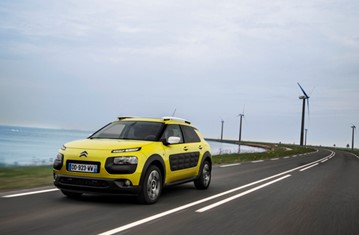Find more information in the General Comments section of the assessment
Find more information in the Rating Validity tab of the assessment
- See More
- See More
- See More
- See More
- Good
- Adequate
- Marginal
- Weak
- Poor
 Passenger
Passenger
 Driver
Driver
 Rear Seat
Rear Seat
 Front Seat
Front Seat
 Car
Car
 Pole
Pole
- Good
- Adequate
- Marginal
- Weak
- Poor


Passenger
outboard
center
Fitted to the vehicle as standard
Not fitted to the test vehicle but available as option
Not Available
-
Infants up to 13 kg
-
Infants and toddlers up to 18 kg
-
Toddlers from 9 to 18 kg
-
Toddlers over 18 kg
Easy
Difficult
Safety critical
Not allowed
| Seat Position | ||||
|---|---|---|---|---|
| Front | 2nd row | |||
| Passenger | Left | center | Right | |
| Maxi Cosi Cabriofix (Belt) | ||||
| Britax Römer King Plus (Belt) | ||||
| Britax Römer Duo Plus (ISOFIX) | ||||
| Britax Römer KidFix (Belt) | ||||
| Maxi Cosi Cabriofix & EasyFix (Belt) | ||||
| Maxi Cosi Cabriofix & EasyFix (ISOFIX) | ||||
| BeSafe iZi Kid X3 ISOfix (ISOFIX) | ||||
| Maxi Cosi Pearl & Familyfix (ISOFIX) | ||||
| Britax Römer KidFix (ISOFIX) | ||||
Easy
Difficult
Safety critical
Not allowed
In the frontal impact, movement of the head of the 3 year dummy, sat in a forward-facing restraint, was not excessive but neck and chest forces were marginally high. Head accelerations indicated marginal protection of the head of the 1½ year dummy. In the side impact, both dummies were properly contained within the protective shells of their restraints, minimising the risk of head contact with the vehicle interior. The passenger airbag can be disabled to allow a rearward facing restraint to be used in that seating position. Clear information is provided to the driver about the status of the airbag and the system was rewarded. All of the child restraint types for which the car is designed could be properly installed and accommodated in the car.
- Good
- Adequate
- Marginal
- Weak
- Poor

Head Impact 17.2 Pts
Pelvis Impact 6.0 Pts
Leg Impact 6.0 Pts
The bumper scored maximum points, with good protection in all areas tested. The front edge of the bonnet was also good in all tests. For a pedestrian's head, the bonnet provided predominantly good or adequate protection with some poor results recorded only on the stiff windscreen pillars.
- Good
- Adequate
- Marginal
- Weak
- Poor
| Speed Limitation Function | Manually Set |
| System Name | ESC | |
| Performance | ||
| Applies To | All seats | ||
| Warning | Driver Seat | Front Passenger(s) | Rear Passenger(s) |
| Visual | |||
| Audible | |||
|
|||
Electronic stability control is standard equipment. A seatbelt reminder is standard for the front and rear seats. A driver-set speed limitation device is also fitted as standard and met Euro NCAP's requirements for systems of this kind.
- Specifications
- Safety Equipment
- Videos
- Rating Validity
Specifications
Tested Model Citroën C4 CACTUS 1.2 'FEEL', LHD
Body Type - 5 door hatchback
Year Of Publication 2014
Kerb Weight 965kg
VIN From Which Rating Applies - applies to all C4 Cactus of the specification tested
Class Small Family Car
Safety Equipment
Note: Other equipment may be available on the vehicle but was not considered in the test year.
Fitted to the vehicle as standard
Fitted to the vehicle as option
Not fitted to the test vehicle but available as option
Not Available
Not Applicable
Videos
Rating Validity



Find more information in the General Comments section of the assessment
 Share
Share









The passenger compartment remained stable in the frontal impact. Dummy readings indicated good protection of the knees and femurs of the driver and passenger dummies. Citroën showed that a similar level of protection would be provided to occupants of different sizes and to those sat in different positions. in the side barrier test, all critical body regions were well protected apart from the chest, protection of which was adequate. In the more severe side pole test, protection of the chest area was marginal but that of other body regions was good. Protection against whiplash injury in the event of a rear end collision was good for the front and rear seats.